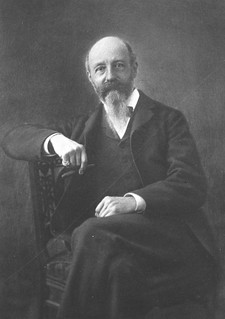Last week I read a book; this week I read a periodical. The item was Memoir of William
Sumner Appleton, A.M.
by Charles C. Smith in Proceedings of the Massachusetts Historical
Society, Volume XXXVII, Oct. 1903, pages 516-527. Here are some excerpts:
WILLIAM SUMNER APPLETON was born in Boston January 11, 1840, and died in his native
city April 28, 1903. He was the elder son of the Hon. Nathan Appleton, for nearly thirty years a
member of this Society, and for three sessions a Representative in Congress from the Boston
district, by his second wife, Harriet Coffin, daughter of Jeffrey Sumner, of Boston.
As a small boy he was sent to a boarding school at Jamaica Plain, then kept by Mr. Cornelious
M. Vinson, which had enjoyed a wide reputation under the management of Mr. Charles W.
Greene, its first principal. He was fitted for college in the private Latin School of Mr. Epes S.
Dixwell, who had recently resigned the headmastership of the Boston Latin School, and who was
the most eminent classical teacher in this community. The thoroughness of his preparation was
seen in his high rank in the first three years of his college course. He graduated in 1860 in the
first half of his class, being entitled to a part at Commencement, a disquisition on A Uniform Coinage.
In the year in which he graduated he was one of the founders of the Boston Numismatic
Society, and he was its secretary from that time until his death.
In his early years he was fond of dancing and social life. From 1864 to 1871 he was a member
of the Independent Corps of Cadets, and for the last four years was in command of a company,
with the rank of first lieutenant.
His interest in coins and medals dates back to his boyhood, and is mentioned in some of his
earliest letters. This study never lost its attractiveness to him, and was pursued to the end of his
life. At his death his collection, which was remarkable both for the beauty and the rarity of its
specimens, included about twelve thousand coins and three thousand medals, the greater part of
which he himself catalogued with great minuteness. Besides being one of the original members
of the Numismatic Society, he was one of the Publishing Committee of the American Journal of
Numismatics from 1870 to 1891, and made many short communications to it.
Inheriting from his father, who died in 1861, and his mother, who died in 1867, an ample
fortune, he had no need to pursue any gainful profession; but he nevertheless entered the
Cambridge Law School, and graduated in July, 1865, with the degree of L.L. B.
In 1867, at the early age of twenty-seven, he was honored with an appointment as one of the
commissioners to attend the annual assay at the United States Mint.
4
August 12, 1871, he was married, at the United States Legation in Berne, Switzerland, to Edith
Stuart, daughter of his cousin William Stuart Appleton, of Baltimore, Maryland. His eldest child,
a daughter, was born in Paris before his return to Boston.
An ineffective delivery and an indistinctness of speech, especially in his later years, detracted
much from the interest with which his papers and remarks were listened to; but their value was at
once seen when written out in his clear and beautiful handwriting or transferred to the printed
page.
by his last will, dated April 25, 1902, Mr. Appleton gave … a very valuable and important part
of his collection of medals and coins to the Historical Society; and … he directed the trustees
under his will to pay over specified sums to numerous literary, scientific, and charitable societies
or institutions, the first of which was this Society, and among the others were the American
Academy of Arts and Sciences and the New England Historic-Genealogical Society.
The first sale from his collection was conducted by Charles Steigerwalt on May 21, 1907. This
was composed of Canadian and British coins and medals. The second sale was conducted by
Steigerwalt on January 18, 1910. This included ancient Greek, Roman and Egyptian coins. Lot
232 was a collection of 259 coins from Alexandria. Lot 259 was a collection of 247 Roman
Family Denarii.
Thomas Elder sold coins and medals from Appleton in his 81st sale on July 8 & 9, 1913. The sale
began with a long run of world medals including strong groups of the medals of Luther and of
Napoleon. It is unfortunate that Appleton did not leave a journal of his travels and records of his
purchases. The collection shows what could be acquired by someone with free time, unlimited
funds and a love of the cultural articles of history.
The Massachusetts Historical Society did not have adequate resources to provide security for the
coins and to make them available for research. Some had gone missing by 1920. Eventually they
put the coins in a bank vault where they were not available to anyone. The coins were consigned
to Stack's for a series of six auctions conducted over 1970 to 1976.
Samuel Appleton appears on a medal struck at the U. S. Mint for the Massachusetts Historical
Society. (Julian AM-43) Samuel Appleton was the uncle of William Sumner Appleton.



